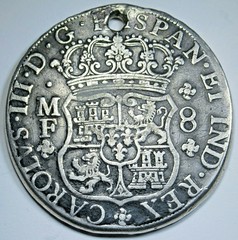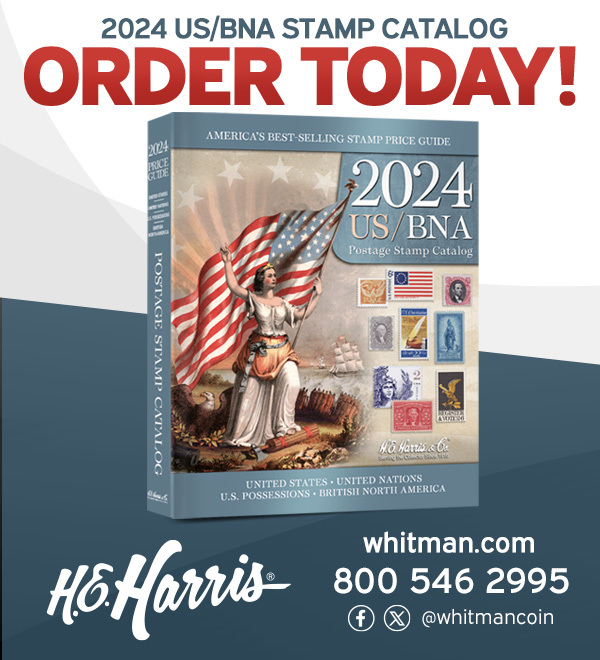
PREV ARTICLE
NEXT ARTICLE
FULL ISSUE
PREV FULL ISSUE
FURTHER ON HAMILTON AND SILVER FINENESSCraig Sholley and Harry Salyards submitted this reply to Bob Julian's notes last week on the fineness of the silver in early U.S. coinage and the exchange of U.S. silver dollars for Spanish dollars in the Caribbean. Thank you. -Editor
As to the Bank of the United States'
According to the ‘Waste Books (Entry 38, also on NNP), the coins struck were delivered to the Bank of
the United States on Oct. 29, 1800 (the majority of the coins were obviously dollars since no half dollars
or quarters had been recently coined.) There are also a few other mixed deposits by the Bank of the
United States following the one noted. The Bank of the United States also made several deposits
specifically noted as As far as Mr. Julian's calculation, estimates of the average weight of coins in a deposit can be tricky. Using Mr. Julian's example of the deposit of Jan 4, 1803, while his estimate of 415.72 does divide into the gross weight of the deposit to yield an approximately even number, so do other figures – such as 410.55 and 412.995. Thus, there is not much surety in such calculations alone. [For those who wish to have some fun with their own calculations, the gross weight of the deposit was 8660 troy ounces and 18 pennyweight or 8660.9 troy oz. 8660.9 x 480 grains per troy oz = 4,157,232 grains. Divide away.]
Mint documents provide clues as to as to the nature of Spanish dollars deposited at the mint. Section III
of the
The reason for excepting Spanish dollars was that they were both legal tender and the predominant coin circulating in the U.S. (both as dollars and cut coins). However, once they became excessively worn, they were no longer acceptable in commerce. Thus, it is far more likely that the Spanish dollars deposited at the mint were fairly worn rather than nearly new. Nonetheless, regardless of which figures one uses, the amount of fine silver in those Spanish dollars was nowhere near 377 grains (our first main point) and that completely negates the proposition that U.S. dollars were traded in the West Indies for Spanish dollars supposedly containing far more silver and recoined at the mint at a profit (our second main point). As far as the unrest in Spain and Mexico, the upset of the Spanish crown in Mexico meant that the Mexican mints no longer had to pay 20% to the Spanish crown for the minting privilege. As a result, Mexico had an even greater surfeit of silver coins than before and needed an outlet. One of those outlets was trade with the U.S. Supporting this view is the fact that private commercial banks, including the Bank of Pennsylvania, the Bank of North America, and several others, overtook the Bank of the United States in 1811 as major depositors of Mexican dollars (see Entry 113, Register of Silver Deposits on NNP). Great discussion. Thanks, everyone. -Editor
To read the earlier E-Sylum articles, see:
Wayne Homren, Editor The Numismatic Bibliomania Society is a non-profit organization promoting numismatic literature. See our web site at coinbooks.org. To submit items for publication in The E-Sylum, write to the Editor at this address: whomren@gmail.com To subscribe go to: https://my.binhost.com/lists/listinfo/esylum All Rights Reserved. NBS Home Page Contact the NBS webmaster 
|


